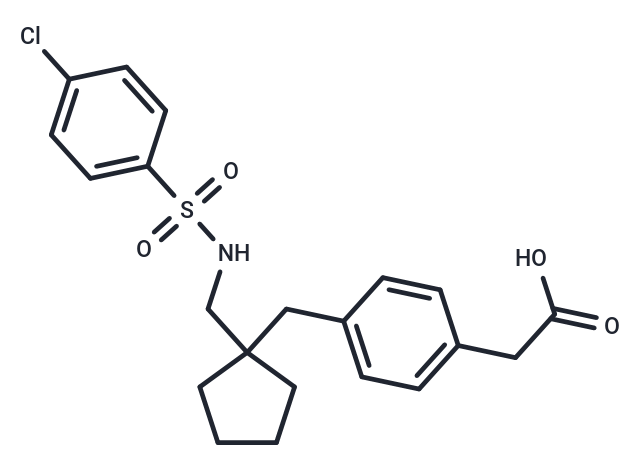Shopping Cart
Remove All Your shopping cart is currently empty
Your shopping cart is currently empty
LCB-2853 is a potent thromboxane A2/prostaglandin H2 (TXA2/PGH2) receptor antagonist with antiplatelet aggregation, antivasospasm, and antithrombotic effects.

| Pack Size | Price | USA Warehouse | Global Warehouse | Quantity |
|---|---|---|---|---|
| 1 mg | $700 | - | In Stock | |
| 5 mg | $1,800 | - | In Stock |
| Description | LCB-2853 is a potent thromboxane A2/prostaglandin H2 (TXA2/PGH2) receptor antagonist with antiplatelet aggregation, antivasospasm, and antithrombotic effects. |
| In vivo | In dog coronary stenosis, LCB 2853 demonstrates high efficacy with an ED50 of 7.2 μg/kg. In rat venous thrombosis induced by venous injury and blood stasis, perfused LCB 2853 reduces thrombus weight in a dose-dependent manner with an ED50 of 220 μg/kg/min[1]. In vivo, LCB 2853 shows an ED50 below 1 mg/kg i.v. against platelet aggregation and vasoconstriction, observed in rat arachidonic acid (AA)-induced thrombocytopenia or U 46619-induced hypertension (ED50 = 0.25 and 0.16 mg/kg) and in AA-induced sudden death in mice (ED50 = 0.44 mg/kg). Additionally, LCB 2853 effectively blocks U 46619-induced bronchoconstriction after i.v. administration (ED50 = 18.4 μg/kg)[2]. |
| Molecular Weight | 421.94 |
| Formula | C21H24ClNO4S |
| Cas No. | 141335-10-6 |
| Smiles | O=C(O)CC1=CC=C(C=C1)CC2(CNS(=O)(=O)C3=CC=C(Cl)C=C3)CCCC2 |
| Relative Density. | no data available |
| Storage | store at low temperature | Powder: -20°C for 3 years | In solvent: -80°C for 1 year | Shipping with blue ice/Shipping at ambient temperature. |
| Size | Quantity | Unit Price | Amount | Operation |
|---|

Copyright © 2015-2025 TargetMol Chemicals Inc. All Rights Reserved.